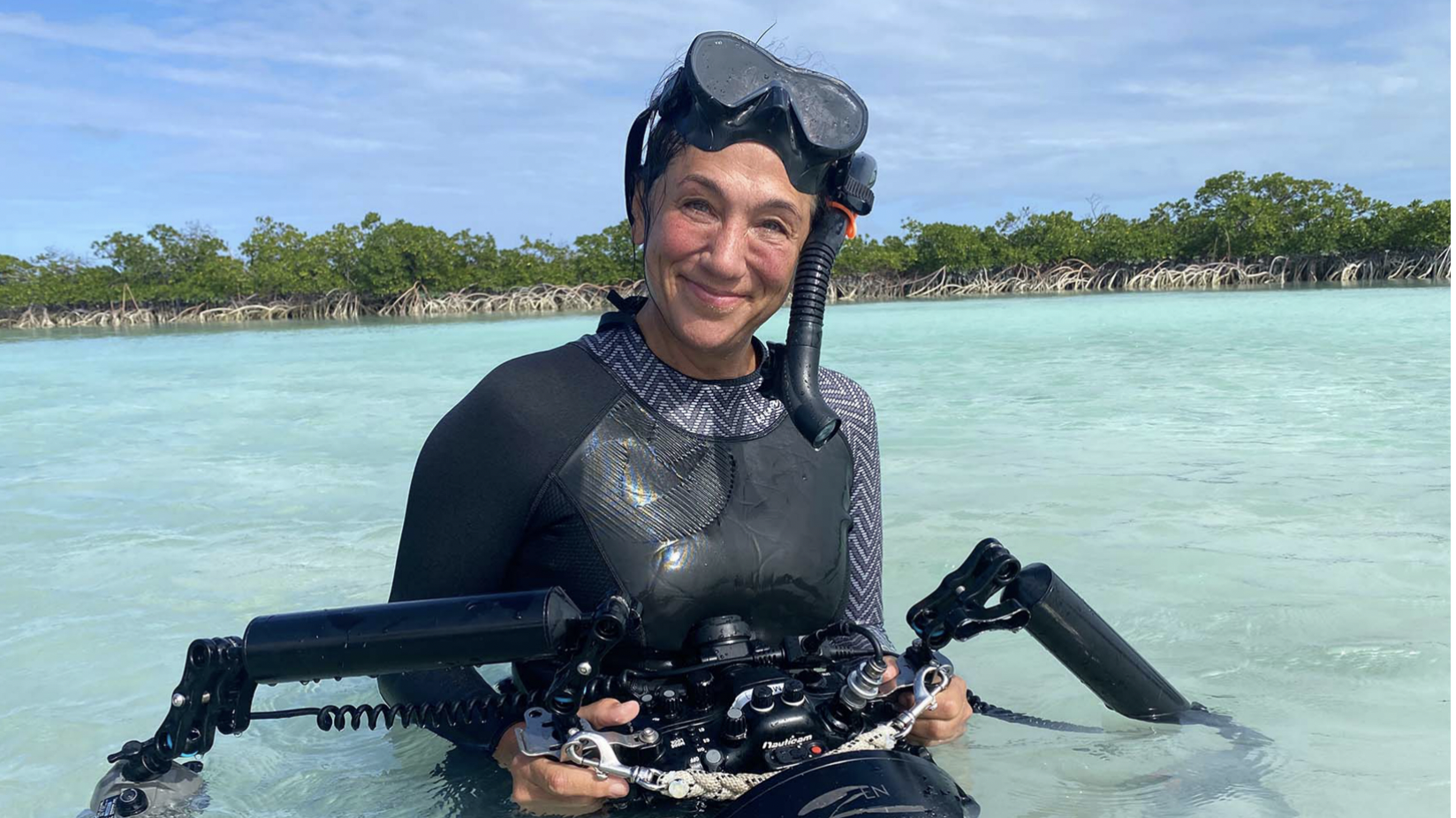
Dr. Sanjay Gupta: How to Safely Store Your Leftovers
We all have our cooking rituals, but are some of them unsafe? Dr. Sanjay Gupta gets to the bottom of handwashing hygiene, especially when handling…
Thought Leader: Sanjay Gupta

Recognised as being one the world’s most influential conservation photographers, Cristina has travelled to 132 countries to fulfil her mission – to communicate the urgent need to protect wild places. Mittermeier’s captivating work has been published in the likes of Time, National Geographic and McLean’s. In 2014, she co-founded not-for-profit organisation SeaLegacy to amplify ocean solutions, and was recently named one of the 100 Latinos Most Committed to Climate Action.
We speak about the power of photography in digital storytelling, the importance of our oceans in the fight against climate change and some of her most inspiring wildlife encounters.
I began my career as a marine biologist, but soon realised that I could better advocate for the oceans and the planet through my camera than with data on spreadsheets. Science is fundamental to understanding what is happening to our planet, but it fails to convey the emotions that make us care.
Photography allows us to humanise stories and create something meaningful, and I had an urgent need to share the plight of the planet. For me, it’s all about the emotional connections we can forge with the subject matter. I love creating imagery that engages people in conversations and makes them stop and think.
Forging a successful career as a photographer has not been an easy journey. I worked hard at teaching myself the basics of photography and then I went back to school to learn more about the underpinnings of fine art, which is the foundation of the type of photography I feel best conveys emotion.
I studied the work of people I admire, including writers, painters and philosophers, and I tried to be innovative in the way I articulated the purpose of my photography. I didn’t just want to take pictures; I wanted to make images of such power and purpose that they would inspire others to give meaning to their life’s work and move people to action.
What has inspired your focus on marine life?
The ocean is barely mentioned but it is the largest ecosystem on our planet and is the ecosystem that has the most influence on Earth. It absorbs at least 25% of all emissions and most of the heat on our planet.
I want people to recognise that the ocean isn’t just a victim of climate change – it is our solution. If our oceans die – and they are dying – we will die with them. Life on Earth is not possible without a living ocean
There is hardly a day that goes by that I am not on it, in it or working to save it. I am often asked if I am an activist; if that means that I actively participate in creating a liveable planet for future generations then, yes, I am.
People see the ocean and imagine it’s just water – but if you were to drink its contents, you’d actually be swallowing microscopic microplankton, which are responsible for a lot of productivity in the ocean.
I founded the International League of Conservation Photographers (ILCP) in 2014, and today I am the co-founder and president of Only One Collective, a new organisation that brings together a diverse, worldwide community of activists and experts to fuel action on ocean conservation.
The Collective includes SeaLegacy, an expedition and storytelling studio that creates powerful visual content to move people from apathy to action, and Only.One, a digital action platform built to support and uplift the ocean conservation community while driving measurable, sustainable and equitable returns for people and the ocean. I work closely with governments to help them gain the support they need to look after marine-protected areas.
Having a big following isn’t enough when it comes to reaching a large audience. Activating people and making them empowered to act is an interesting challenge, but actions need to be informed by science.
My biggest fear is the ocean itself. On several occasions, I’ve been lost at sea. Sometimes, you come out of the water and your boat isn’t there. The prospect of dying alone at sea is the scariest thought for any diver, because you can’t swim against the power of the ocean.
I’ve spent many years out on boats and on expeditions. My partner, Paul, and I bought a catamaran which acts like a shooting platform. It’s also our home, which we share with our crew. We all eat together and, working in the middle of the ocean, we have to look out for each other, too. It can take a long time to find good situations to film, sometimes spending eight hours at a time in and out of the water – which can get quite exhausting. Maintaining the diving equipment is intensive too.
Observing baby sperm whales at play is one of the most wonderful sights.
Sperm whales are part of a matriarchal society and are usually led by a female. They are very gentle creatures and highly communicative. In order to hunt, the sperm whales have to feed very deep, diving at least 6km, but the babies are unable to dive because they hold too much blubber.
When the mother dives, she leaves the baby with an aunt or an older sibling, but the babies don’t want to sit still. They are very curious and are always looking for ways to entertain themselves. One even nibbled at my partner’s arm while we were filming!
It costs a lot of money to be out there! Having our own shooting platform as well as a team that loves filming and diving is brilliant, but expensive. Financing this part of the work – as well as spending time on the ground fundraising – is challenging.
It’s also hard to convince individuals that these stories are instrumental to building a movement of people who will take action.
Sir David Attenborough has given voice to generations. I’m a big fan of BBC and BBC Earth’s landmark natural history documentaries, but there is one video that brings me particular joy: BBC Earth’s One Hour of Amazing Ocean Moments. I recognise a lot of the featured locations, as well as many of the photographers and filmmakers. These videos inspire me, as they show me places I am yet to be.
Cristina Mittermeier was born in Mexico City in 1966, and has dedicated her life to writing, conservation and digital storytelling. She is the recipient of many prestigious awards, including the Smithsonian Conservation Photographer of the Year Award and the Imaging Award for Photographers Who Give Back. In 2021, she received the Seattle Aquarium’s Sylvia Earle Medal and was also named one of the 100 Latinos Most Committed to Climate Action. Earlier this year, Mittermeier received an Honorary Doctorate of Fine Arts, Honoris Causa, from Simon Fraser University.
Dr. Sanjay Gupta: How to Safely Store Your Leftovers
We all have our cooking rituals, but are some of them unsafe? Dr. Sanjay Gupta gets to the bottom of handwashing hygiene, especially when handling…
Thought Leader: Sanjay Gupta
Neal Katyal on Challenging Trump’s Global Tariffs
On this special edition of the show, Barry sits down with Neal Katyal, Milbank LLP partner and former acting Solicitor General of the US. Barry…
Thought Leader: Neal Katyal
Erika Ayers Badan: Working For What You Want
Jennifer Fisher came by this week. She has a lot of energy and a spicy, strong, fuck-it-let’s-do-it vibe. Her baubles are also next level. We…
Thought Leader: Erika Ayers Badan

